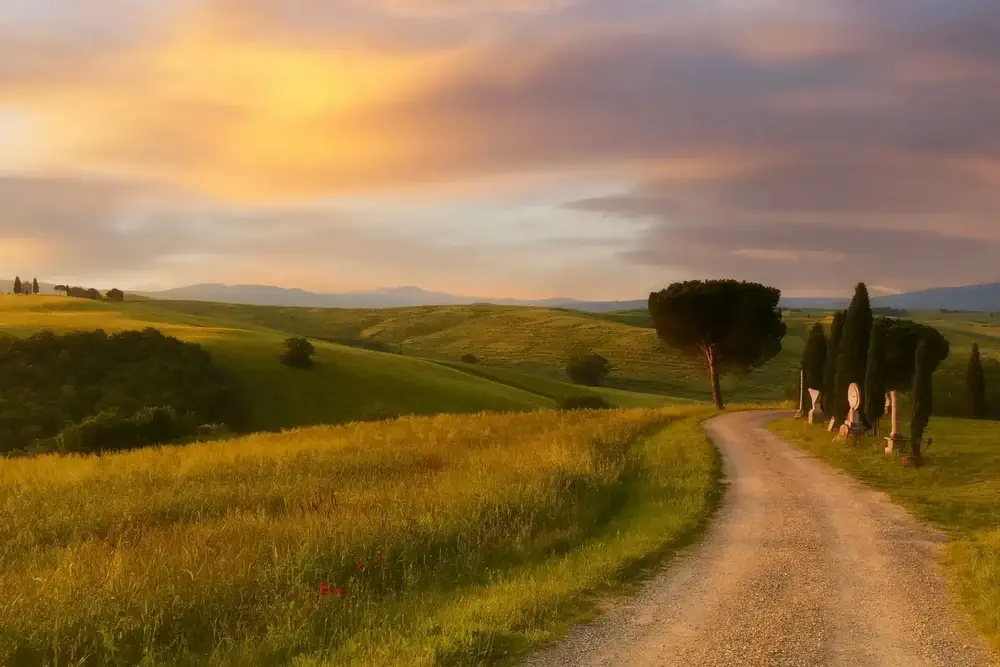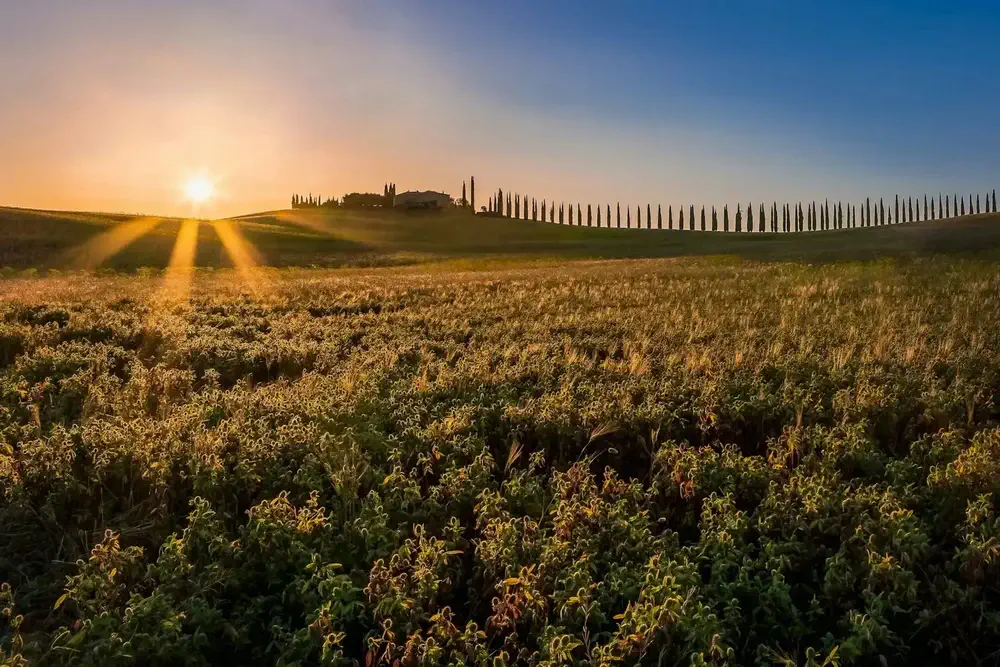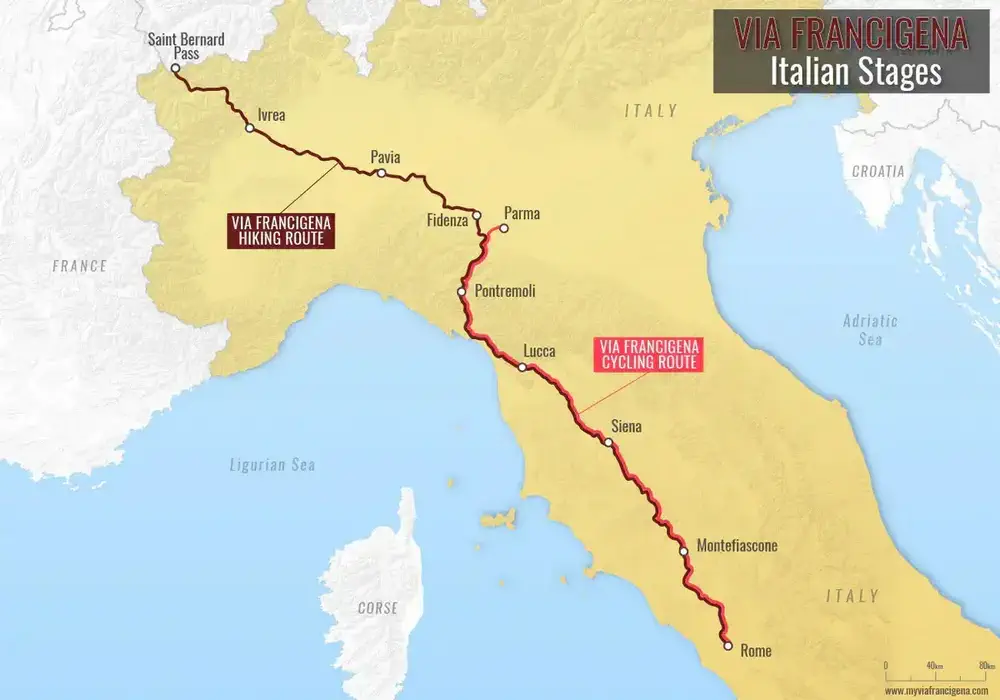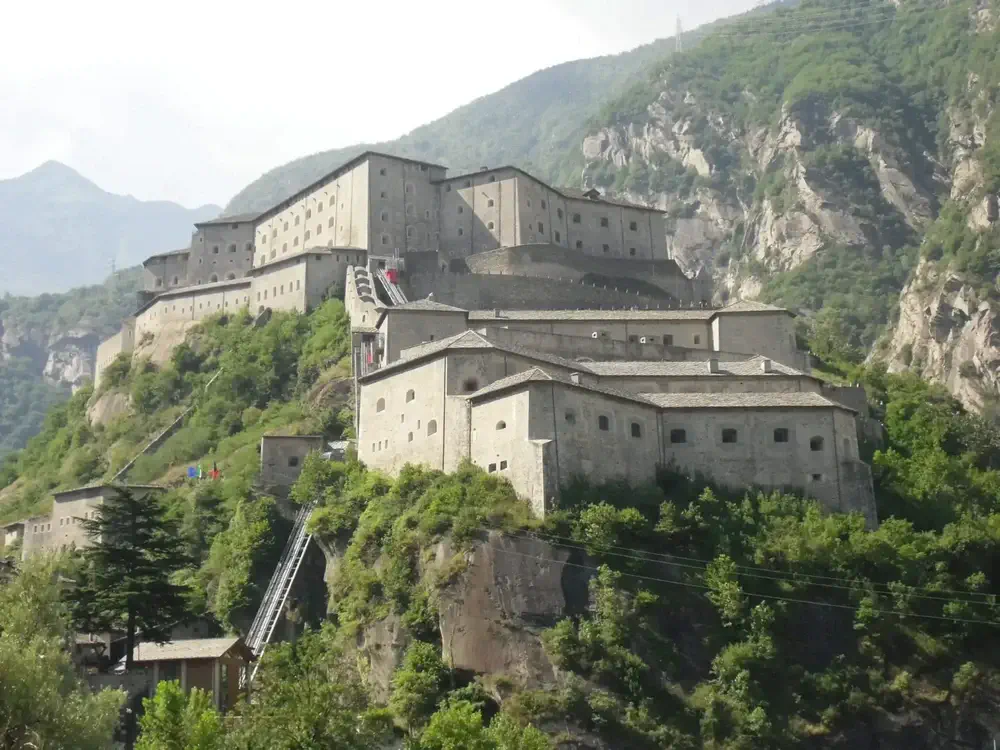Walking the Via Francigena
Walking the Via Francigena
Walking the Via Francigena is a life-changing experience. From the moment that you first step foot on the trail, to your eventual arrival in the Eternal City of Rome, every cultural site visited, every meal savoured, and every conversation had with locals highlights the beauty and simplicity of the Italian way of life.
While the entirety of the Via Francigena spans multiple countries, it is this final portion through the Italian countryside that garners the most attention – and rightfully so. Passing through iconic destinations such as the Aosta Valley, Tuscany, and Rome itself, the Via Francigena is the ultimate walking adventure for travellers who want a taste of la dolce vita – the sweet life.

Why People Walk the Via Francigena
There is no single reason why people choose to walk the Via Francigena, as it is a deeply personal experience that varies from traveller to traveller. But if we had to narrow it down, it would likely be the fact that the route features everything that you want and need out of a pilgrimage experience.
For travellers who are focussed on the religious aspect of the Via Francigena, the route provides the opportunity to visit countless sites of religious importance, as well as the dedicated time to reflect on faith, life, and your place in the world.
From a cultural standpoint, the Via Francigena exposes travellers to various periods of Italian history, from the ruins of the ancient Etruscans and Romans, to the iconic Renaissance architecture that can be witnessed in every village and town along the trail. Add to that the incredible selection of regional delicacies and local wines, and you have a pairing that would be hard for almost any traveller to turn down.
So whether you are looking to dedicate time to your faith, follow in the footsteps of ancient pilgrims, or simply enjoy the surrounding landscape while sampling the product of generations of Italian craftsmanship, the Via Francigena has all you need for the perfect walking holiday – and it’s waiting to be discovered.

What Are the Different Sections of the Via Francigena?
One of the best parts about the Via Francigena is that the trail cuts across the Italian countryside through several provinces, allowing travellers to experience not only natural beauty, but the cultural differences that define each region and make Italy such a unique place to visit.
Beginning in the alpine landscape of the Aosta Valley, pilgrims make their way south through Piedmont, Lombardy, Emilia Romagna, Tuscany, and finally Lazio on the way to Rome. While variations do exist, this route consists of 8 sections that cover roughly 1,000km and is usually completed over the span of several weeks. Alternatively, many pilgrims choose to take a more relaxed pace, even breaking up the journey by completing several sections and returning at a later date to complete the rest.
Here is an overview of the 8 Italian sections of the Via Francigena:

The first section of the Via Francigena highlights the natural beauty of northern Italy by taking travellers from the Gran San Bernardo Pass, through the stunning landscapes of the Aosta Valley, and into the alpine foothills of Piedmont as you arrive in Ivrea. The terrain in this section will be the most varied due to the proximity to the Alps, and the culture experienced here will have a distinctly northern flair.
Section 2 of the Via Francigena leads travellers from the foothills of the Alps to the fertile lands of the Po River Valley to experience the ancient architecture and vibrant culture found in the city of Pavia. Featuring vineyards, rolling hills, winding rivers, and delicious regional specialties such as cured meats, this section offers a great blend of leisure and active adventure.
The third section of the Via Francigena will take pilgrims across the Po River and into the heart of Emilia-Romagna, specifically the food-centric region of Parma. Travellers who consider themselves foodies will have the opportunity to indulge in regional delicacies such as Prosciutto di Parma, culatello di Zibello, and the king of cheeses: Parmigiano Reggiano. After savouring these local flavours, pilgrims can take a break from the culinary world to visit the historic cathedral in Fidenza.
After traversing the relatively flat Po River Valley, section four of the Via Francigena will see travellers make their way into the Apennine mountain range of central Italy to conquer the Cisa Pass enroute to Pontremoli. As pilgrims climb above the surrounding landscape they will be treated to sweeping views across the Lombardy Plain, and can follow in the footsteps of ancient pilgrims as they make their way across the medieval Groppodalosio bridge.
Section 5 of the Via Francigena offers travellers a diverse range of scenery, trading the rugged terrain of the Apennine Mountains for the crystal waters of the Ligurian Coast, before heading into the heartland of Tuscany on the way to the city of Lucca. Pilgrims can enjoy a refreshing swim in the sea and revel in the marble sculptures and beautiful art of Pietrasanta, all before arriving in Lucca to explore its historic streets and Renaissance walls.
Considered by many travellers to be one of the best stretches of the Via Francigena, section 5 leads pilgrims through iconic Tuscan towns such as Lucca, San Gimignano, and Siena. The rolling hills of the surrounding landscape, charming villages, breathtaking renaissance architecture, and delicious food and wine along this route are nothing short of incredible, providing the perfect blend of culture and adventure.
Leaving behind the medieval charm of Siena, this section of the Via Francigena will fully immerse travellers in the natural beauty of the Tuscany region. Walking along the cypress-lined paths of Crete Sinesi and through charming hilltop villages such as Montalcino, San Quirico d’Orcia, and Castiglione d’Orcia, pilgrims will eventually make their way to the town of Montefiascone situated on the serene shores of Lake Bolsena.
Lastly, the final section of the Via Francigena will gradually eschew the natural beauty of the Italian countryside for the rich culture and grandeur of Rome, the Eternal City. As travellers make their way through Lazio, they will have the chance to visit well-preserved ancient Etruscan and Roman sites, navigate the quiet paths of the Riserva Naturale dell’Insugherata on the edge of the city, and celebrate as their pilgrimage culminates in their arrival at St. Peter’s Square in Vatican City.
When to Walk the Via Francigena
The best time to walk the Via Francigena is during the spring (April to June) and autumn (September to October) months. Although these times represent the peak season for pilgrims walking the trail, they also offer mild temperatures, fewer tourist crowds, and stunning natural scenery, with spring bringing blooming wildflowers and lush greenery, and autumn treating hikers to golden vineyards and crisp, pleasant air.
Summer in Italy can be quite hot, especially along the final stages of the trail as you approach Rome, which will add a degree of difficulty to walking the Via Francigena that could otherwise be avoided.Additionally, accommodations may be hard to come by, as tourists, particularly in Tuscany, usually flood the charming cities and towns of the region. Winter, though quieter, can bring rain, snow, and shorter daylight hours, particularly in the early stages of the Via Francigena that are in close proximity to the Alps. Choosing the right season ensures a more comfortable and enjoyable journey along this historic pilgrimage route.

FAQ on Walking the Via Francigena
As with any long-distance walking route, the Via Francigena comes with its own collection of frequently asked questions by travellers. Here are the most common:
1. How long does it take to walk the Via Francigena?
The full Via Francigena, from Canterbury to Rome, is approximately 2,000 km (1,200 miles) and typically takes 2 to 3 months to complete. However, many walkers choose to walk just the Italian portion of the Via Francigena, which can take several weeks.
2. How hard is the Via Francigena?
The Via Francigena varies in difficulty depending on the section. Some parts are relatively flat and easy, such as the Po Valley in Italy, while others—such as the Alps and the Apennines—are more challenging with significant elevation gains. Daily distances and weather conditions also affect difficulty, making it a moderate to strenuous long-distance walk.
3. How long is the Via Francigena?
The full route from Canterbury, England, to Rome, Italy, spans approximately 2,000 km (1,200 miles). The Italian section alone, from the Great St. Bernard Pass to Rome, is about 1,000 km (620 miles).
4. Is signposting along the Via Francigena good?
Signposting has improved significantly, especially in Italy, where the route is well-marked with brown signs, yellow arrows, and the pilgrim logo. However, some sections in France and Switzerland may have less consistent waymarking, so carrying a GPS device or a detailed guidebook is recommended.
5. Is the Via Francigena accessible for people with disabilities?
While some sections of the Via Francigena are relatively flat and on paved paths, much of the route includes rough terrain, steep inclines, and uneven trails, making full accessibility challenging. However, alternative routes and shorter accessible segments, especially in urban areas, may be suitable for those with mobility challenges. It’s best to research specific sections in advance and consider support options where needed.
Why Choose the Via Francigena for Your Walking Holiday?
Whether you’re a seasoned long-distance walker craving your next challenge or a first-time pilgrim seeking a holiday filled with purpose and beauty, the Via Francigena is a special route that has something for everyone. It offers the best of Italy in one incredible experience—stunning landscapes, rich history, delicious food, and the rewarding feeling of conquering an iconic trail.
From the quiet, cobbled streets of medieval towns to the wide-open vistas of the Italian countryside, there’s no better way to experience the authentic charm of Italy than with the freedom that a self-guided walking adventure provides.
